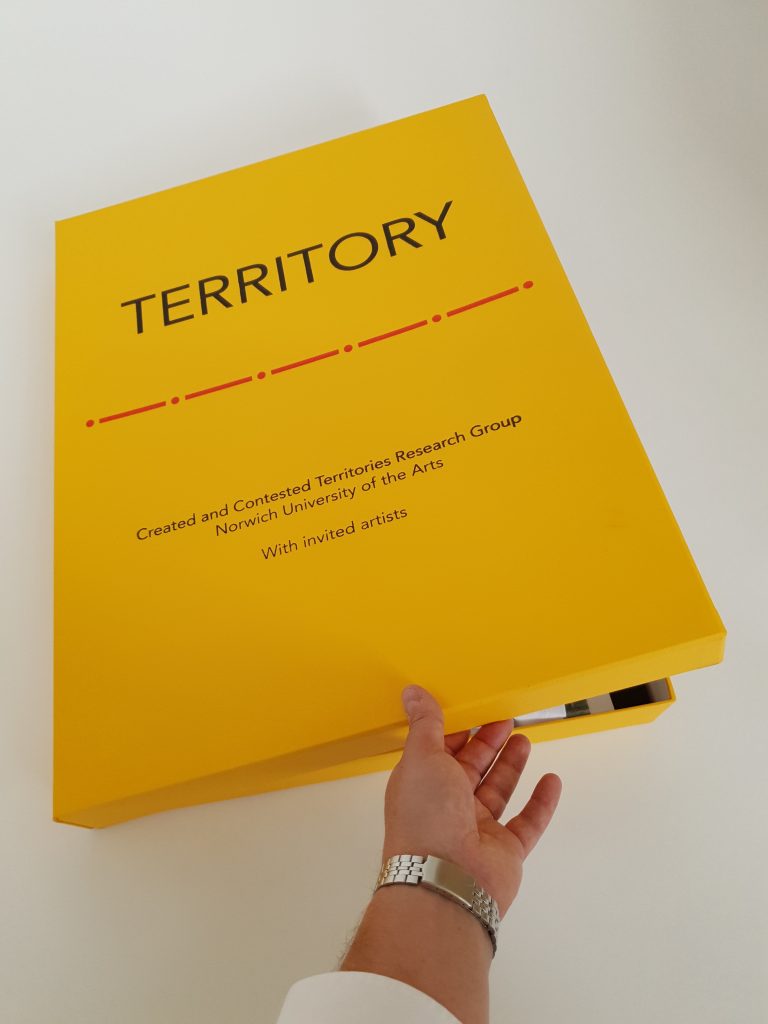
Curator’s statement
Following the success of the Research Group’s experiment with a low-cost trans-European exhibition titled ‘Ballot’ (2015-16) the Group decided in 2017 to explore further possibilities for an exhibition in an age of austerity that would enable early career researchers, as well as established practitioners, to display work generated by their research into a common theme. Venues were chosen for the ways in which they might resonate with the central research questions: how are territories defined, how are they contested, and how might the emotive force of such definitions and contestations be registered through art-practice?
An exhibition in a box is a contradiction in terms. Yet the box as artefact is not merely a neat solution to how to transmit safely and inexpensively a collection of prints across frontiers. It also serves as a point of interrogation, its bright yellow presence insisting on haptic engagement. From Pandora’s Box to Gaston Bachelard’s psychoanalytic study of chests, cabinets, and spaces of enclosure where things are hidden, [i] a box stages an inside and an outside and promises revelation as well as somewhere to hide. In an age of Amazon deliveries and rough sleeping, boxes have become controversial markers in their own right of other kinds of territorial boundary. A box is never just a box.
Once opened, this bright and optimistic box – so very unlike the airtight black Solander boxes in which Museums store their prints and drawings is found to contain a series of individual works each accompanied by the artist’s explanation of how they investigated the idea of territory whether local or international, particular or general. The recipient exhibition space is at liberty to show these in whatever way they wish, thus permitting a degree of autonomy seldom experienced in a loan exhibition. Some of the prints contained in the box employ lettering in a chilling reminder of the stark written signs (often in multiple languages) that greet a traveller or refugee who reaches a border post, reminding them they may not pass. In other cases the history of defining territorial markers – dykes or fences – are the subject of lyrical visual explorations, reminding viewers of humanity’s perpetual endeavour to establish possession.
Recognising that
meanings are generated interactively with viewers, the Contested Territories
box and its contents signify in diverse ways determined by location. Part of
the research process involved identifying unfamiliar (and sometimes unusual)
venues. The choice was not determined by questions of prestige but by how such
engagement might add to the cumulative impact of the research. The fact that
several venues have requested an opportunity for a symposium or conference
around the box and its contents to which NUA artists, designers and architects
will contribute has made possible an ongoing complexification of the discussion
thus generating further possibilities for the future. Taking a pressing and
highly charged question – territorialism – and starting from the simple
question of how individual artists in their practice might contribute to a
discussion articulated in deliberately versatile terms, we have furthered our
own research aims and found new collaborators.
[i] Gaston Bachelard, The Poetics of Space, 1958
